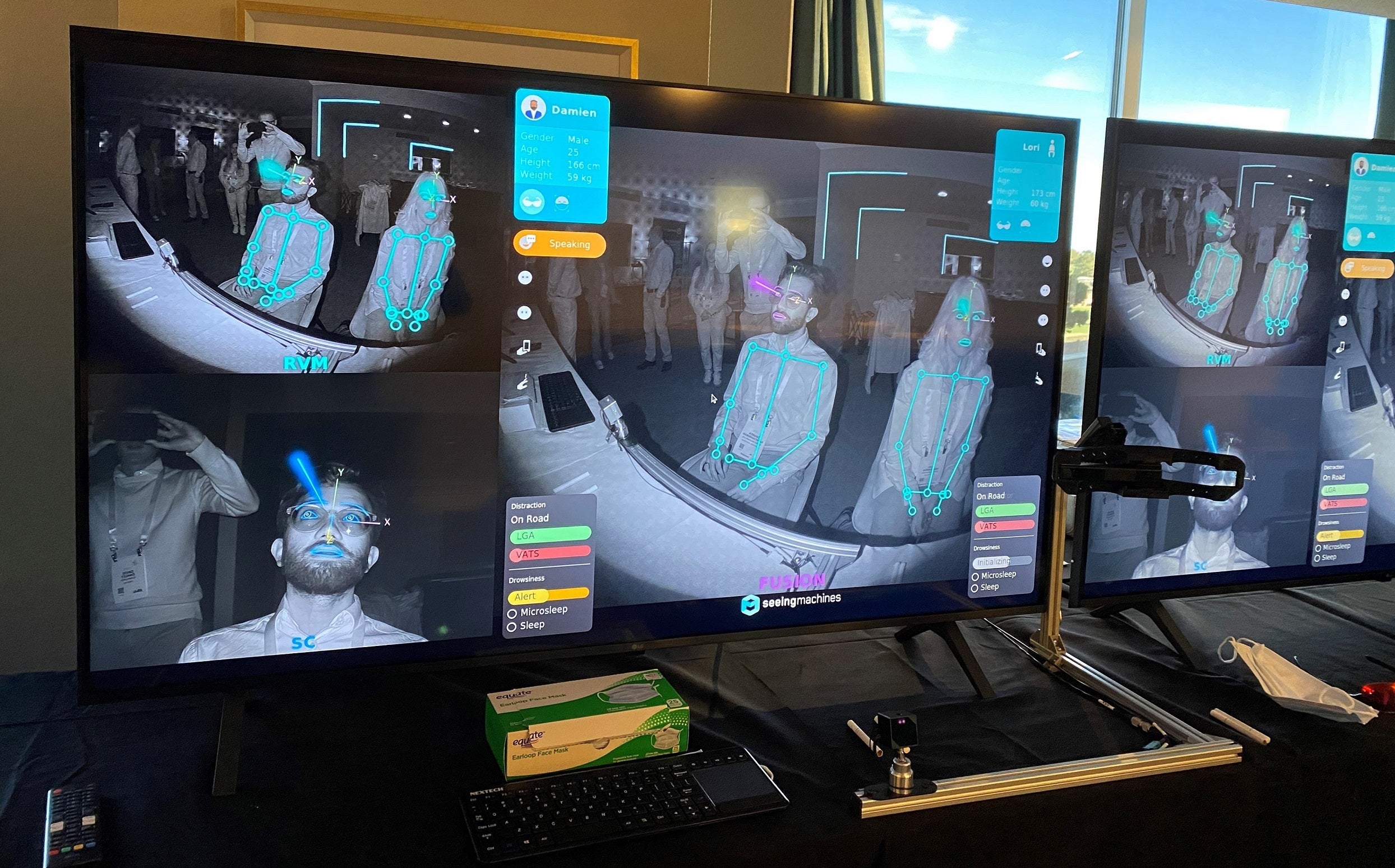This article was first published on GlobalData’s dedicated research platform, the Automotive Intelligence Center.
Walking around the Consumer Electronics Show (CES) is a bit like taking a stroll through the future. At every stand, new technology pushes the boundaries of what one would think is possible. From robots performing household chores to flying vehicles, there are plenty of novel inventions on display, many of which still seem far removed from our day-to-day experience.

However, at CES 2025, GlobalData was given a taste of one technology that may appear to have been beamed back from the future, but which is actually in use in the real world already, and set to feature more prominently very soon.
On the sidelines of CES, we spoke with Paul McGlone, CEO of Seeing Machines, an Australian-based company that produces Driver Monitoring Systems (DMS). The company’s technology is already used in vehicles from many household-name OEMs, and Mitsubishi Electric Mobility recently announced a collaboration with Seeing Machines, bringing a £26.2 mn investment in the process.
Using cameras mounted in the vehicle’s cabin to track the driver’s gaze, DMS detects whether a driver’s eyes remain on the road. There are many reasons why a driver may be distracted, including phone usage, children and pets, drowsiness, and intoxication. Right now, typically the DMS technology would issue alerts to the driver in the event that a lack of attention is detected, but it is not difficult to see how DMS could be amalgamated into Autonomous Vehicle (AV) systems so that the car could intervene to prevent an accident if the DMS determines that the driver is distracted.
Although one might imagine that DMS is a technology set to be reserved for Luxury vehicles, or even specific industry applications such as trucking, this is not the case. In fact, from 2026, the European Union will require all new vehicles sold in the region to be equipped with a camera-based DMS. Therefore, even city run-arounds will need to be fitted with technology that might have been considered the stuff of science fiction just a few years ago. Similar legislation could be coming to the US, although it seems that a Trump administration focused on deregulation could demur from making such equipment mandatory.

US Tariffs are shifting - will you react or anticipate?
Don’t let policy changes catch you off guard. Stay proactive with real-time data and expert analysis.
By GlobalDataGiven that a major theme of CES was the trend towards full AVs, it could be argued that DMS technology will be redundant in a relatively short space of time. After all, if there is no human driver, why monitor them? However, Paul McGlone is not too concerned about this possibility: “If you have a car with a steering wheel that offers either partial or full autonomous capability, there will be a requirement for a driver monitoring system. If you get to a robotaxi that has no steering wheel, there will still be requirements for monitoring in cabin, for things like health… But we think it’s going to be many decades before the majority of vehicles have no steering wheel”.
In theory, AVs should eventually provide a much higher level of safety than human drivers, although the transition to a more AV-heavy road environment could prove challenging as AVs interact with less predictable humans. Still, Seeing Machines is willing to bet that DMS can and will be leveraged even for full AVs, as the technology will be needed for applications such as sensing passenger size and weight for the safe deployment of airbags. Beyond that, DMS could also be adapted to focus on the in-cabin rider (no longer driver) experience, automatically sensing and adjusting settings to make passengers more comfortable, or offering reminders that objects have been left in the vehicle.
With my sales forecasting hat on, I feel that it is worth noting that DMS is a good example of the increasing technological complexity of new cars and that there could be a knock-on effect on the price of those vehicles. In a cost-sensitive environment, this could lead to the discontinuation of less expensive models – since these are becoming increasingly difficult to produce profitably – or to lower sales of new vehicles, as some customers are priced out.
DMS is an impressive advancement and it will undoubtedly have many practical uses. However, it could raise concerns in some quarters over issues such as data protection and privacy, as the in-car experience becomes less and less private. Ultimately, as with many of the innovations on show at CES, the question appears to be not so much what is possible to accomplish through technology – now or in the future – but to what extent do we as humans want to cede control over aspects of our lives to machines? There will be trade-offs to be made as human autonomy decreases and safety increases, but a future in which driving is a far more automated experience seems assured.
David Oakley, Manager, Americas Vehicle Sales Forecasts, GlobalData




